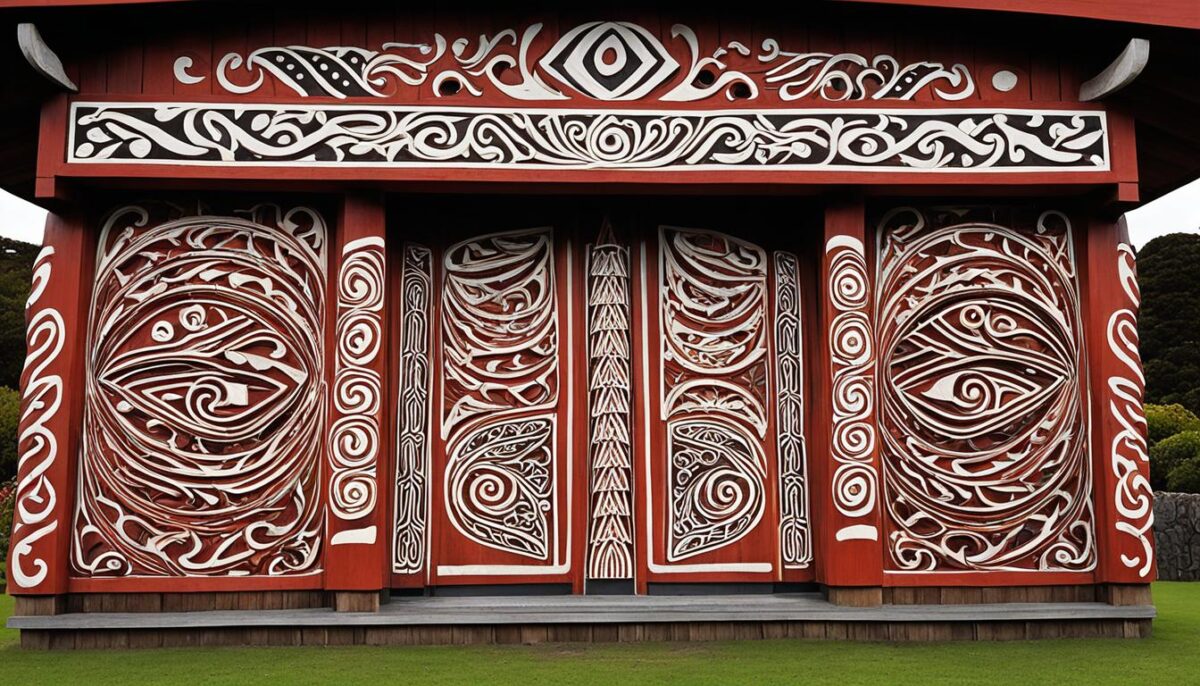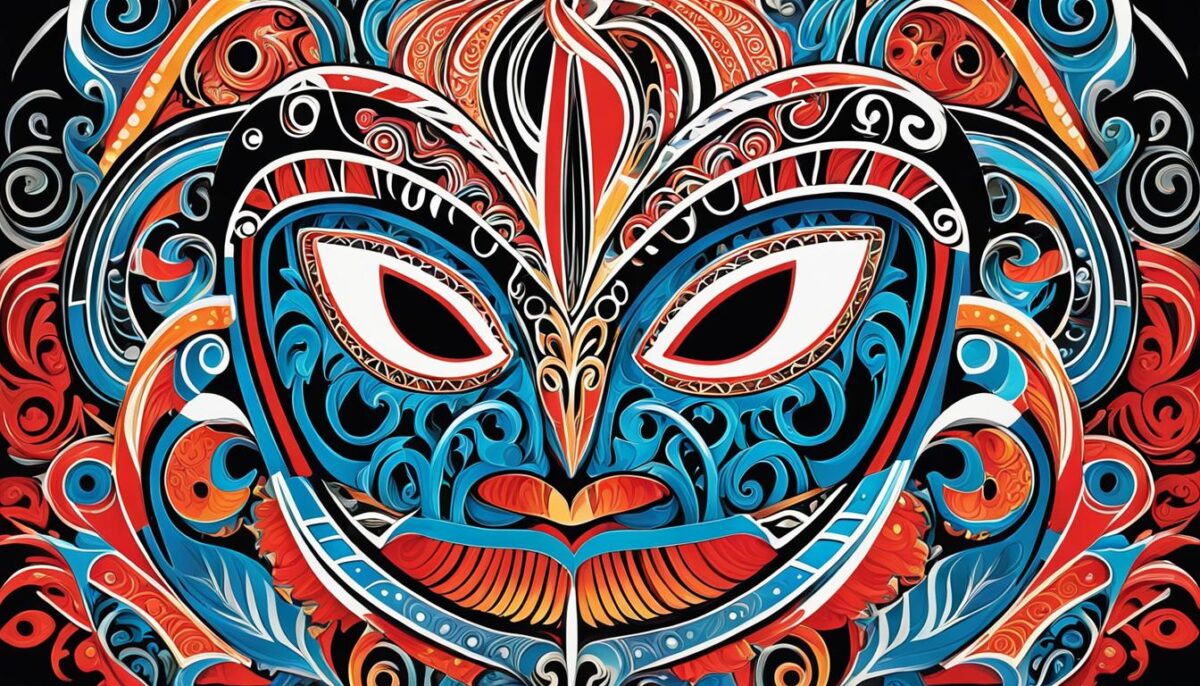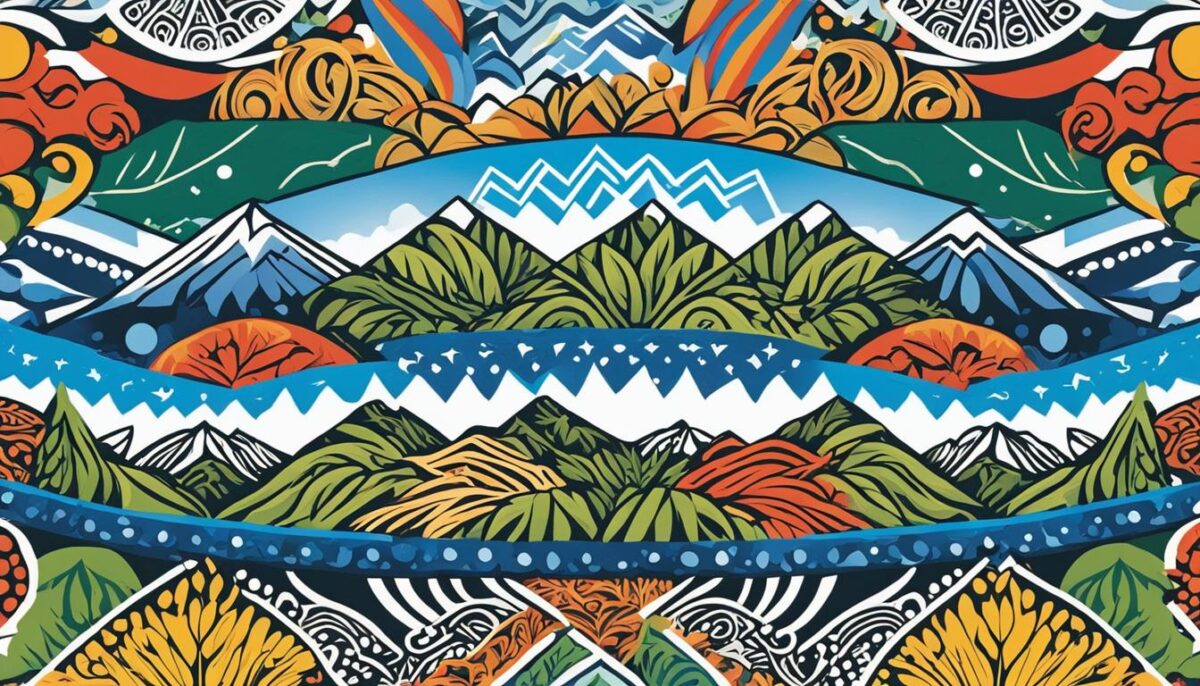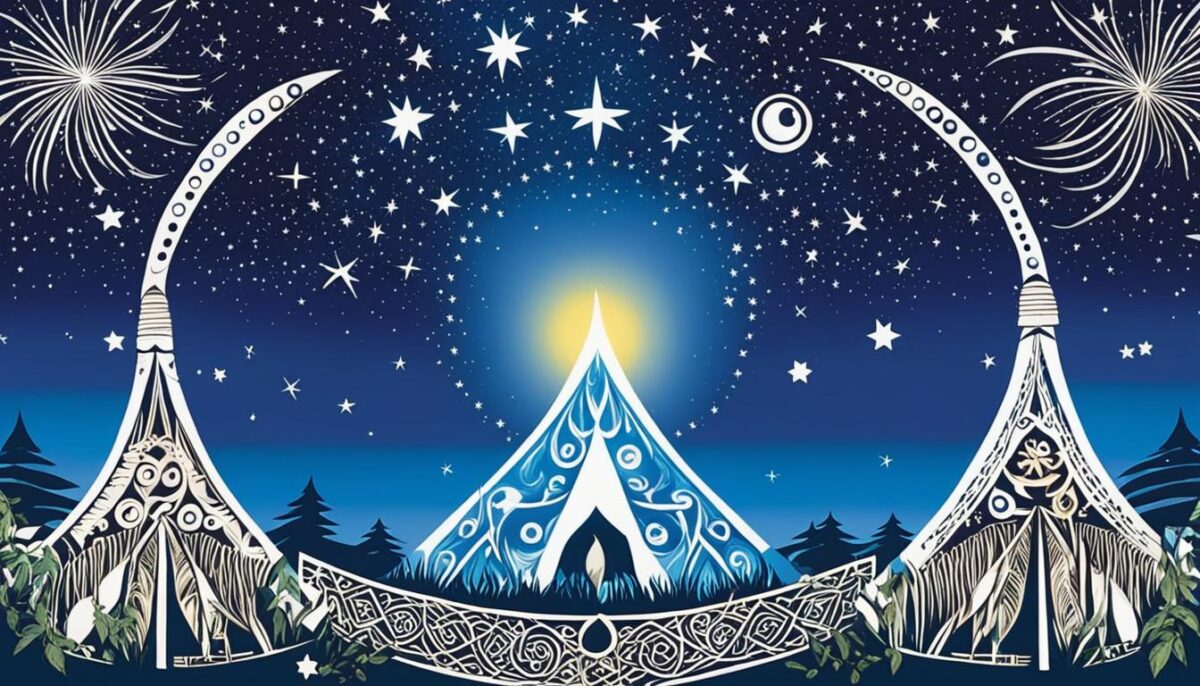Welcome to a fascinating exploration of Maori Culture, a vibrant tapestry of heritage and traditions that holds immense significance in the context of New Zealand. Discover the captivating history, art, and impact of this ancient culture that has shaped the identities of its people for centuries.

Show a traditional Maori meeting house, or “wharenui”, with intricate carvings and vibrant colors. There should be a large central post, or “pou”, that represents the ancestor or deity the house is named after. In front of the meeting house, include a group of Maori people performing a welcoming ceremony, called a “powhiri”, for visitors. The group should be dressed in traditional clothing, such as woven cloaks or “korowai”, and decorated with intricate facial tattoos, or “moko”. Surrounding the meeting house, include lush green vegetation, rolling hills and a clear blue sky to represent the beauty of New Zealand’s natural landscape.
The History of Maori Culture
In order to truly understand Maori Culture and its enduring significance, it is essential to explore its rich history. The roots of Maori Culture can be traced back to the indigenous Polynesian people who migrated to New Zealand around the 13th century. These early settlers brought with them a deep connection to the land and a vibrant cultural heritage.
The Maori people flourished on the islands, developing their own unique customs, traditions, and systems of governance. Their strong connection to nature and the spiritual realm shaped every aspect of their lives, from their language to their artistic expression.
However, their journey was not without challenges. During the late 18th century, European colonization reached New Zealand, bringing significant changes and threats to Maori Culture. The impact of colonization was profound, as Maori land was confiscated, diseases were introduced, and cultural disruption occurred.
Despite these hardships, the Maori people persevered and fought to retain their cultural identity. Today, Maori Culture stands as a testament to the resilience and strength of the indigenous people of New Zealand. It has become an integral part of the nation’s identity and a source of inspiration for people around the world.
Migration and Cultural Origins
The migration of the Polynesian people to New Zealand, known as Aotearoa in Maori, is a pivotal chapter in Maori Culture’s history. These brave explorers undertook an arduous journey across the vast Pacific Ocean, guided by their exceptional navigational skills and intimate knowledge of the celestial bodies.
Their arrival in New Zealand marked the beginning of a new era, as they adapted to the unique environment and established thriving communities. They developed a deep bond with the land, recognizing its spiritual significance and incorporating it into their daily lives.
Impact of Colonization
The arrival of European settlers in the late 18th century brought immense upheaval to Maori Culture. The colonizers introduced new technologies, diseases, and political systems that had far-reaching consequences for the indigenous people.
Land confiscation and the imposition of European laws disrupted Maori social structures and threatened their way of life. The loss of ancestral lands and the consequent pressure on resources led to the erosion of traditional practices and cultural knowledge.
Cultural Resurgence and Revival
Despite the challenges, the Maori people have shown incredible strength and resilience in preserving and revitalizing their culture. Efforts to reclaim ancestral lands, restore traditional practices, and promote Maori language and arts have played a significant role in the cultural resurgence.
Today, Maori Culture continues to thrive, with the Maori language being an official language of New Zealand and Maori art and performances being celebrated globally. The cultural revival serves as a source of pride for the Maori people and an opportunity to educate and inspire future generations.
| Key Historical Milestones | Impact on Maori Culture |
|---|---|
| Polynesian migration to New Zealand | Established the foundations of Maori Culture |
| European colonization | Disruption of Maori social structures and cultural practices |
| Cultural revival movements | Preservation and revitalization of Maori language, arts, and traditions |
Art and Expression in Maori Culture
Maori Culture is renowned for its rich artistic traditions and diverse forms of expression. From traditional wood carving to the ancient art of ta moko, Maori art reflects both the cultural significance and contemporary expression of the Maori people.
One of the most prominent forms of Maori art is traditional wood carving. This ancient craft involves intricately carving designs into wood, creating unique sculptures and decorative pieces. The carvings are often symbolic, representing spiritual or historical elements of Maori culture. These intricate carvings can be seen in various places, such as marae (meeting houses) and waka (canoes), and they serve as a testament to the skill and craftsmanship of Maori artisans.
Ta moko, the traditional Maori art of tattooing, is another significant form of artistic expression. Ta moko is not just about ornamentation but is deeply intertwined with cultural identity and storytelling. Each moko design is unique, reflecting the individual’s genealogy, life journey, and status within the community. In Maori culture, ta moko is seen as a sacred practice and holds great spiritual significance.

Create an image of a vibrant and intricate Maori mask, with swirling patterns and bold colors, inspired by the traditional art of kowhaiwhai. Let the lines and shapes flow organically, with a sense of movement and energy radiating from the design. Use a combination of geometric shapes and curving forms to create a dynamic composition that captures the essence of Maori culture and its rich artistic heritage. Play with contrasts of light and dark, warm and cool tones, and use texture and shading to add depth and dimensionality to the mask. Above all, let your creativity soar as you bring this unique piece of Maori art to life.
In addition to these traditional art forms, Maori culture has also embraced contemporary expressions of art. From contemporary paintings and sculptures to digital media and multimedia installations, Maori artists continue to push the boundaries of artistic expression while staying rooted in their cultural heritage. This dynamic fusion of tradition and innovation highlights the ongoing evolution and adaptability of Maori art.
The artistic traditions of Maori culture not only serve as a means of creative expression but also play a vital role in preserving and promoting Maori heritage. Through their art, Maori artists celebrate their identity, connect with their ancestors, and share their stories with the world, fostering a deeper understanding and appreciation of Maori culture.
Significance and Impact of Maori Culture
Maori Culture holds immense significance for the people of New Zealand, as it plays an integral role in shaping the country’s society and identity. The preservation of Maori Culture is crucial in ensuring the survival and transmission of traditional values, beliefs, and practices from one generation to another.
Cultural preservation efforts not only safeguard the tangible and intangible aspects of Maori Culture but also foster a sense of cultural identity and pride among the Maori people. It allows them to maintain a strong connection to their ancestral roots and empowers them to pass on their cultural heritage to future generations.
However, the struggle for land and resource rights remains an ongoing challenge for the Maori people. These rights are intrinsically tied to their cultural identity and are vital for the preservation and practice of Maori customs, rituals, and traditions. The preservation of Maori land rights is a crucial aspect of cultural preservation, as it ensures the accessibility and availability of culturally significant areas.
Maori Culture also plays a significant role in New Zealand’s thriving tourism industry. Visitors from around the world are drawn to the unique cultural experiences that Maori Culture offers, such as traditional performances, art, crafts, and cuisine. This cultural tourism not only provides economic opportunities for Maori communities but also creates awareness and appreciation for their rich cultural heritage.


